The traditional eye exams that so many of us got used to are now history. Today, eye exams are performed with advanced, high tech equipment, and with computerized diagnostic tools. One could say that modern eye exams are actually more important than in previous years. This is because state-of-the-art diagnostics can detect and diagnose much more accurately than before. In fact, sometimes an early diagnosis can alert us to problems that are only in development.
But even with the best of tools, nothing comes close to a comprehensive eye exam performed by a qualified professional. The truth is that eye exams should always be at the forefront of preventive eye-care. It means having regular check-ups during the year, along with the appropriate follow-up when necessary. And although we don’t often connect the two, eye health should be an integral part of overall health. Both shouldn’t be reactive, and both shouldn’t be taken for granted.
Eye exams should be comprehensive. To begin with, there should be an in-depth pre-exam that allows for a complete patient profile to be documented. This should be followed with a detailed overview of the patient’s strengths and weaknesses with respect to eye health. The patient’s personal profile affords medical information that is valuable for future reference, while providing the family doctor with specific medical details relative to that patient’s eye health.
Today, most everything is computerized and digitized. Patient records are computer documented electronically and are accessible immediately, wherever we are. The idea is to provide complete eye care – beginning with testing, followed by diagnosis, and continuing with prognosis. It’s an integrative process that involves clinic professionals who are skilled, proficient, and experienced. And it all starts with eye exams and testing for virtually every facet of vision health.
Eye exams are designed to evaluate the overall condition of a patient’s eyes – but there is much more. The condition of the cornea is checked; the retina is examined; and noticeable symptoms of specific disorders are observed – like cataracts and glaucoma. Thorough eye exams might also provide a warning of more serious conditions, especially if treatment is necessitated. The fact is, most eye conditions are successfully treated when diagnosed at an early stage.
Regular and on-going eye exams are most important when a history of eye issues is present. Such conditions as glaucoma, diabetic retinopathy, and macular degeneration require early detection and diagnosis to avoid the potential for serious health issues. At the Woodbridge Eye Care Clinic, optometrist Dr. Brian Abrams provides eye care that focuses on three patient priorities: early detection; precise diagnosis; and professional treatment.
Some routine eye exams are covered by OHIP (Ontario health coverage). This includes patients who are 65 years of age and older, and patients who are younger than 20 years of age. Coverage is for services rendered by an optometrist or physician, and is allowable once yearly (plus follow-up visits that are necessary). But regardless of OHIP coverage, eye care is recommended at every age, and it should be routine, regular, and consistent.


